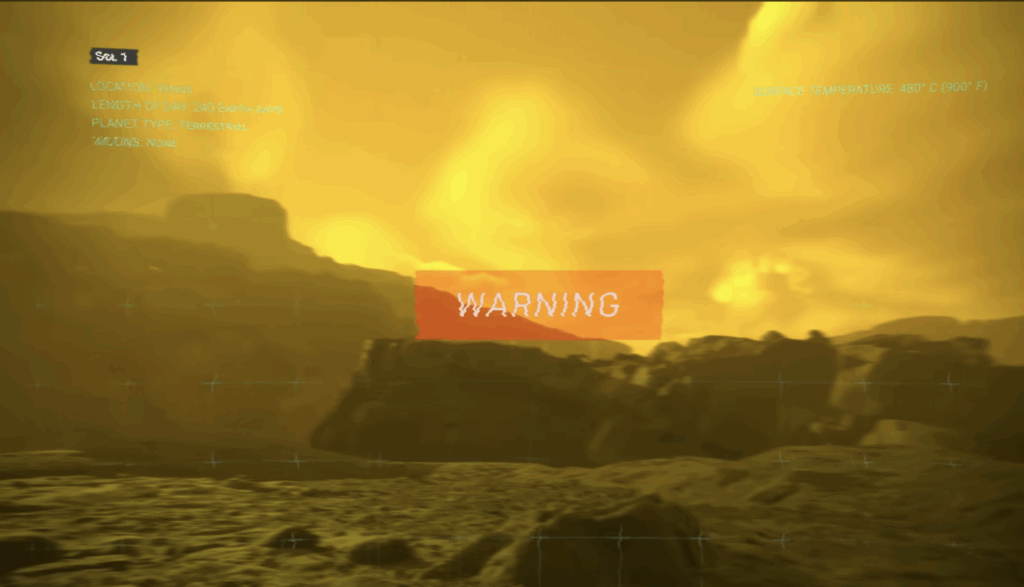Venus, the second planet from the Sun, is often referred to as Earth’s twin due to its similar size and gravity. However, its surface conditions are extreme, making it one of the most inhospitable worlds in the Solar System. At its closest approach, Venus is approximately 40 million kilometers (25 million miles) from Earth, yet even with current space technology, visiting the planet remains a formidable challenge.
Atmosphere and Surface Conditions
The Venusian atmosphere is dominated by carbon dioxide, with thick clouds of sulfuric acid and traces of nitrogen. These clouds give the sky a yellowish hue and prevent more than 10% of sunlight from reaching the surface, creating a constant dim light similar to perpetual dawn. The dense atmosphere also traps heat, resulting in surface temperatures averaging 475 °C (900 °F), hot enough to melt lead. Atmospheric pressure on Venus is approximately 90 times that of Earth, comparable to being nearly a kilometer underwater.

Volcanic Landscape
The surface of Venus is covered in mountains, plains, and tens of thousands of volcanoes, some potentially still active. Rust-colored terrain dominates the landscape, shaped by both volcanic and tectonic activity over billions of years. These features, combined with the high temperatures and crushing atmospheric pressure, create a hostile environment for human exploration.
Historical Space Missions
Human understanding of Venus comes primarily from robotic space missions. The Soviet Venera program successfully landed probes on the planet, with Venera 13 in 1981 transmitting data for 127 minutes before succumbing to the extreme conditions. These missions revealed surface compositions, atmospheric chemistry, and volcanic activity, demonstrating the difficulty of surviving even briefly on Venus.
The Challenge of Human Survival
Any direct human presence on Venus would require advanced protective equipment. The combination of extreme heat, corrosive clouds, and immense atmospheric pressure makes unprotected survival impossible. Even with pressurized suits, exposure would be measured in seconds due to the lethal conditions.

Scientific Significance
Despite its hostile environment, Venus provides valuable insight into planetary evolution, atmospheric dynamics, and potential habitability of exoplanets with dense atmospheres. Understanding Venus helps scientists model climate change, greenhouse effects, and the boundaries of life in extreme conditions.
Venus remains a target of scientific interest, not for human colonization, but for robotic exploration that continues to expand knowledge about one of Earth’s most extreme neighbors in the Solar System.



























